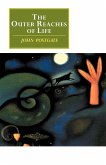This book was first published in 1977 and is widely recognized as a classic in the field. It is the "bible" for wildlife managers everywhere. It is an introduction to the methods and analysis of vertebrate populations for ecologists and wildlife managers as well as students of these subjects. A wide range of examples drawn from mammals and birds in different parts of the world is used to illustrate these methods. The book shows how population analysis can be applied to practical problems of wildlife management such as reducing a population, stimulating it to increase or taking from it a sustained yield. In order to make this complex subject as simple as possible, the methods for analysis described in this book are those which use elementary algebra and statistics rather than complex mathematics. Graeme Caughley studied the interactions between large mammalian herbivores and the environments they occupy. The pattern of population growth that can be predicted theoretically from such a relationship is both complex and variable. The animals will either erupt, crash, and then converge to a more stable density, or the population may oscillate indefinitely, the densities of plants and animals being locked into a stable limit cycle. He argued that the dynamics of mammalian herbivore populations are comprehensible only in terms of an interactive relationship between the herbivores and vegetation. He further argued that efficient management of such systems requires an understanding of the underlying mechanisms whereby the animals react to the plants and in turn the plants react dynamically to the effects of grazing. He was best known for his contributions to the understanding of herbivore-vegetation dynamics in the New Zealand high country, the Himalayas, southern Africa and the semi-arid rangelands of Australia. His research was distinguished by rigorous design, execution and analysis, so that the conclusions had generality beyond the particular species studied. Since he chose topics that combined theoretical interest and practical application, he also influenced important management policies - deer populations in New Zealand, kangaroos in Australia and the conservation of large mammals in Africa and North America. He had a major influence on thinking and practice in the field of vertebrate ecology and wildlife management throughout the world.
Hinweis: Dieser Artikel kann nur an eine deutsche Lieferadresse ausgeliefert werden.
Hinweis: Dieser Artikel kann nur an eine deutsche Lieferadresse ausgeliefert werden.








